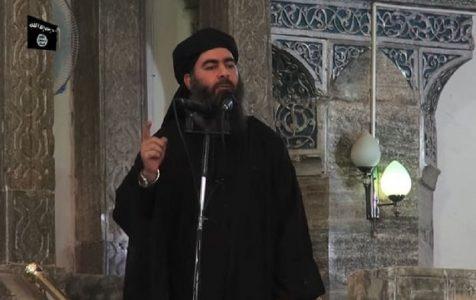
The hunt for the most wanted terrorist Abu Bakr al-Baghdadi
The world’s most wanted man remains at large, but as his ‘caliphate’ has crumbled so has the discipline of his leadership.
Day and night for the past three years, an unprecedented number of the world’s spies have zeroed in on a patch of Iraq and Syria to hunt for one man. Their target, Abu Bakr al-Baghdadi, the leader of the Islamic State terrorist group, has eluded them all. But only just.
The most wanted man on the planet has been traced to a specific place at least three times in the past 18 months alone. And despite the protection of a devoted network, there have been other sightings of the reclusive leader, reported by Isis members shortly afterwards and confirmed later by intelligence officers. Being a fugitive in the digital age, or in a losing cause, clearly has its shortfalls.
One 45-second mistake on 3 November 2016 almost cost Baghdadi his “caliphate” before its collapse last year. As Iraqi and Kurdish forces advanced on Mosul, Baghdadi took up a handheld radio in a village between the west of the city and the town of Tal Afar. Spies based in a listening post further north were stunned as his distinctive voice exhorted followers to stand their ground.
“He spoke for 45 seconds and then his guards took the radio from him,” said a senior member of the Kurdistan Region Security Council who monitored the call. “They realised what he’d done.”
That rare moment of ill discipline allowed the network of spies chasing Baghdadi to trace him in real time. But then, as on at least two other occasions, there was no time to act. Baghdadi’s entourage knew his cover had probably been blown and whisked him away.
Late last year, he was also traced to a village south of Baaj, again through the brief and careless use of a communications device. The connection was picked up by a signals intelligence network that has penetrated web and phone use in Isis areas. However, it was too fleeting to deploy fighter jets circling above on permanent hunt for targets, and there was no confirmation of exactly where he was hiding.
The morsels of chatter have helped fill in a picture of Baghdadi’s movements – and temperament; the cast-iron discipline of his immediate circle has weak spots after all. His senior leaders, however, have had far more trouble with communications discipline, and slip-ups have often led to their demise.
According to Hisham al-Hashimi, an Iraqi expert and writer on Isis, Baghdadi is literally the last man standing among the group’s founding members.
“Out of 43 main leaders, Baghdadi is the only one left,” he said. “Out of 79 senior leaders there are only 10 left. The mid-level commanders (124) constantly change positions and posts due to deaths of other members. Every six months their roles change, they either get killed or replaced.”
Before being killed, some Isis leaders spoke on intercepted phones about having been in meetings with Baghdadi, or having known his movements. Their mistakes offered glimpses of his capacity and methods as leader. However, more has been gleaned about the terrorist tsar’s habits and leadership by people who have seen him regularly in parts of north-western Iraq and north-eastern Syria, and reported the encounters afterwards to regional and western spies.
From late 2014 until her capture in May the following year, Nisreen Assad Ibrahim Bahar had served tea to Baghdadi in the town of Omar in north-eastern Syria, whenever he came to visit her husband, the Isis oil “minister” Abu Sayyaf.
“All I did is put the tea behind the door,” she told the Guardian. “But I knew he was there. He used to come often.” Bahar, otherwise known as Umm Sayyaf, said she was not allowed to see Baghdadi but was in no doubt when he was around.
“He used to visit my husband and talk business. Everything changed when he arrived.”
Abu Sayyaf was killed in a raid by US commandos, who took Bahar to Erbil, where she has been held ever since. She denies being a senior member of Isis, but her contact with the group’s leader has helped paint a picture of him.
A more comprehensive psychological profile of Baghdadi and his movement patterns had been drafted by US and British spies by mid-2015. Two years later, his area of travel had shrunk, as had the Isis “caliphate”.
Intelligence agencies in Iraq and Europe believe that for most of the past 18 months, Baghdadi has been based in a village south of Baaj, and has travelled in a small range between Abu Kamal, on the Iraq-Syria border, and Shirkat, south of Mosul.
Three intelligence agencies have confirmed that Baghdadi was seriously wounded in an airstrike near Shirkat in early 2015. Separate sources have confirmed to the Guardian that he spent several months recovering in Baaj. Even now, his movements remain limited by his injuries.
According to witnesses who saw him in Abu Kamal after the end of the Muslim festival of Ramadan, he was looking tired and drawn, a shadow of the confident, black-robed figure who ascended a pulpit in Mosul’s Great Mosque of al-Nuri in mid-2014 to proclaim the “caliphate’s establishment”.
Source: The Guardian





